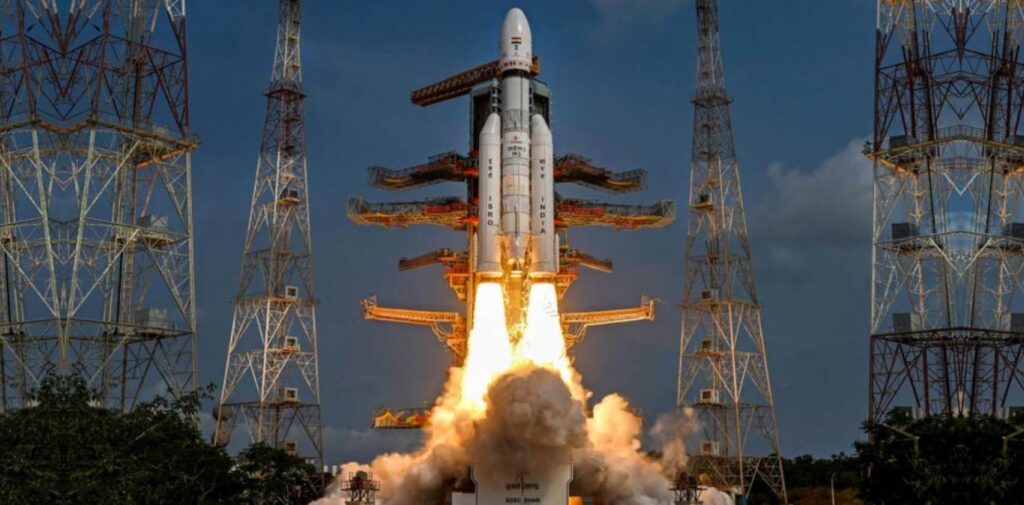India’s journey into space is a remarkable tale of ambition, innovation, and perseverance. From launching its first satellite, Aryabhata, to the successful Mangalyaan mission to Mars, India has carved out a significant place in the global space arena. Let’s explore this exciting evolution of India’s space program, showcasing how it all began and where it stands today.
The Beginning: Aryabhata
In 1975, India made its first foray into space with the launch of Aryabhata, its first satellite. Named after the ancient Indian mathematician and astronomer, Aryabhata was a groundbreaking project for the Indian Space Research Organisation (ISRO). The satellite was launched from the Soviet Union and marked the start of India’s ambitious journey into space.

Aryabhata was primarily designed for scientific and technological research. It was equipped with instruments to study solar physics, the Earth’s atmosphere, and to perform various experiments in the field of space science. Although it faced some initial technical difficulties, Aryabhata successfully transmitted data for about five years, paving the way for future Indian satellites.
The Growth of ISRO
Following the success of Aryabhata, ISRO continued to expand its capabilities. The 1980s saw the development of the Indian National Satellite System (INSAT), which provided vital communication, broadcasting, and meteorological services to the country. The first satellite in this series, INSAT-1A, was launched in 1982.
During this period, ISRO also began to focus on launching satellites for remote sensing. The Indian Remote Sensing (IRS) program was initiated to monitor natural resources, agricultural land, and urban planning. These satellites became essential tools for sustainable development and disaster management in India.
Advancements in Launch Vehicles
A crucial aspect of India’s space program has been its focus on developing indigenous launch vehicles. The Polar Satellite Launch Vehicle (PSLV) and the Geosynchronous Satellite Launch Vehicle (GSLV) were developed to enhance India’s satellite launch capabilities.
The PSLV, in particular, became a symbol of India’s space prowess. Launched for the first time in 1994, it has since become one of the most reliable launch vehicles in the world. In 2014, India made headlines by successfully launching 104 satellites in a single mission using the PSLV, setting a world record.
Chandrayaan: Moon Exploration
In 2008, India entered the realm of lunar exploration with the Chandrayaan-1 mission. This mission aimed to explore the Moon and gather crucial data about its surface and mineral composition. One of the significant achievements of Chandrayaan-1 was the discovery of water molecules on the lunar surface, which opened up new possibilities for future lunar missions.

Chandrayaan-1’s success not only showcased India’s growing expertise in space technology but also enhanced its reputation as a significant player in international space exploration.
Mangalyaan: Mars Mission
Perhaps the crowning jewel of India’s space achievements is the Mars Orbiter Mission, also known as Mangalyaan. Launched in November 2013, Mangalyaan aimed to demonstrate India’s capability in interplanetary exploration. It was a bold mission that required advanced technology and precise execution.
In September 2014, Mangalyaan successfully entered Martian orbit, making India the first Asian nation to reach Mars and the fourth space agency globally to achieve this feat. The mission was celebrated worldwide for its cost-effectiveness, with a budget of just $74 million, which was significantly lower than similar missions by other countries.

Mangalyaan has provided valuable data about Mars’ surface, atmosphere, and mineral composition, contributing to our understanding of the Red Planet. Its success solidified India’s status as a leading space-faring nation.
Future Endeavors: Gaganyaan and Beyond
India’s space journey continues with ambitious plans for the future. One of the most significant upcoming projects is Gaganyaan, India’s first manned space mission. Scheduled for launch in the near future, this mission aims to send Indian astronauts into space, showcasing India’s growing technological capabilities and aspirations.

In addition to Gaganyaan, ISRO is also planning further lunar missions, including Chandrayaan-3, and more ambitious interplanetary missions. The Indian space program is now looking towards a collaborative future, engaging with other countries and space agencies to expand its horizons.
Conclusion: India Space Odyssey
From the launch of Aryabhata to the successful Mangalyaan mission, India’s space program has come a long way in just a few decades. It has transformed from a nascent program into a globally recognized space agency, contributing significantly to science, technology, and international cooperation.
The journey is not just about reaching new heights in space; it’s about inspiring generations of scientists, engineers, and dreamers. India’s space odyssey is a testament to human ingenuity and the relentless pursuit of knowledge. As we look ahead, the possibilities for India in space are limitless, and the world will be watching as it continues to explore the final frontier.




